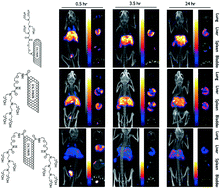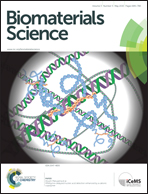Advances in the biomedical application of polymer-functionalized carbon nanotubes
Abstract
Nowadays, carbon nanotubes (CNTs) have attracted the attention of scientists because of their unique electronic, magnetic, optical, mechanical, and chemical properties. However, their poor solubility in solvents, especially in water, limits their applications in several promising fields such as biomedicine, biomedical imaging, and cancer therapy. The attachment of hydrophilic segments to CNTs is a very efficient method for overcoming this problem. This review covers the latest advances in the synthesis of water-soluble CNTs with an emphasis on the molecular structure of various categories of hydrophilic molecules/macromolecules which have been grafted onto the surface of CNTs. Indeed, from the viewpoint of chemical synthesis, covalent bonding of several water-soluble molecules/macromolecules including small water-soluble organic molecules, linear, hyperbranched and dendritic polymers/biopolymers, glycoconjugate molecules/polymers as well as biomolecules onto the surface of CNTs has been deeply surveyed. Moreover, the most recent and interesting bio-applications of polymer-functionalized water-soluble CNTs have been properly reviewed.


 Please wait while we load your content...
Please wait while we load your content...